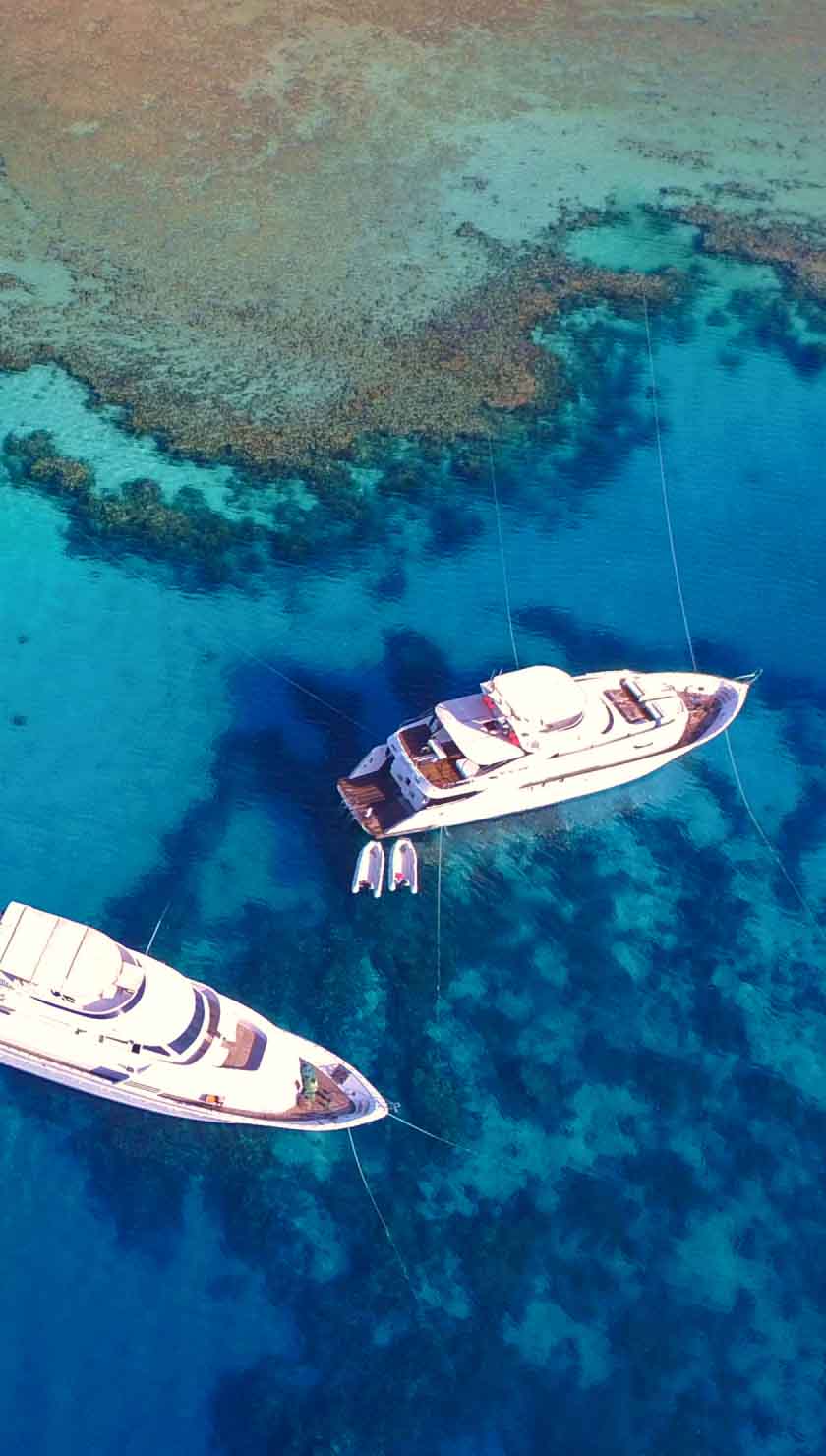As a testament to the strong investment in Marine National Parks, such as The Nature Foundation of St. Maarten and The Reserve Naturelle de St. Martin, the diversity of fish is some of the best in the Caribbean with over 700 species. The pristine rock and coral formations create an intricate ecosystem that allows many beloved species to thrive, from starfish to lobsters, blue crabs, seahorses, surgeon fish, grouper, trumpetfish, tarpon, filefish, barracuda, moray eels, and trunkfish. Green sea turtles are a frequent visitor on dives and the loggerhead turtle also likes to make an occasional appearance. Humpback whales and large dolphins too can be seen further out to sea between February and June, during their mating season. Currently the only liveaboard available on the island, the Caribbean Explorer which was established in 1987, cherry-picks the best sites in the area by providing dive cruises to Saba and St. Kitts. Both are small islands to the south of St. Maarten/Martin and are also protected by Marine National Parks. The current liveaboard, the Caribbean Explorer II, will take you for an 8 day/7night dive tour, upon which you will complete approximately 25 dives. The 115 feet (35 m) boat can accommodate up to 18 passengers in 9 luxury staterooms, each equipped with air conditioning and a private en suite bathroom.
The liveaboard will pick you up from Bobby's Marina in Philipsburg, St. Maarten (the southern half) before departing for the island of Saba late in the evening. 3 days will be spent diving the picturesque sites of Saba, followed by a night crossing to St. Kitts for an additional 3 days of diving. On Day 7, you will return to Port Zante on St. Kitts for an island tour and onshore dinner. For those interested, further island tours can be arranged to explore Saba and St. Kitts, although be aware that itineraries can change due to weather and logistical conditions.
Dive Sites and Areas of St. Maarten/Martin
Charlie's Shoal is a seldom dived coral reef ridge just off St. Maarten to the south. Maximum depth is 65 feet (20 m) with great visibility most of the time. Being quieter, turtles are frequently seen here, as well as stingray, barracudas, big grouper, and stonefish.
Big Mama's reef is the resident shark reef, again located just off St. Maarten to the south. Most commonly, the sharks are Caribbean reef sharks and can measure up to 10 feet (3 m) in length. The maximum depth of this site is 164 feet (50 m) although the average depth is 40 feet (12 m). As with most sites in St. Maarten/Martin, this site is also suitable for Open Water divers. Dive guides will ensure all safety measures are adhered to.
Saba is a beautiful little island, only 5 square miles, which meets the sea with towering red and pink cliffs. The island remained almost inaccessible until the 70s when a small harbour, Fort Bay, was built. Diving here is a very special experience, with sites consisting of seamounts and pinnacles, fringing reefs, and true coral reefs (structures made up entirely by coral, rather than coral upon rock structures). Pelagic species, such as Dorado can also be seen as some of the dive sites are open-ocean. Specific sites include, Twilight Zone, Louís Ladder, Third Encounter, Hot Springs, and Man of War Shoals.
St. Kitts is a 15 mile long, 5 mile wide, island that has yet to see any tourism on a mass scale. Rainforests provide a different terrain for hikers, with a steep, central mountain range that rises to 3750 feet. Dive sites to the east of St. Kitts are usually very calm, as they are protected by the island. The underwater structures here give a clue to the island's volcanic history, with lava flows that are now encrusted with coral reef and sponges. Specific sites include Sandy point, St. Peters, Coconut Tree Reef, Black Coral Reef, and Brimstone Hill Shallow.
When To Go
Diving is available all year round since both air and water temperatures remain fairly constant. During winter, air temperatures may dip to 82F (28C) and water temperatures 79F (26C), with summer air and water temperatures a toasty 89F (32C) and 85F (29C) respectively.
Being tropical there is a rainy season, which is sometimes known as hurricane season. Normally this lasts from June to November, but rarely is weather strong enough to halt or disrupt outings.
Tips For Travellers
Although you don't need to show proof of your dive experience, it's always a good idea to bring your dive certifications even if they are available online (and you may want to bring your log book with you anyway to note your awesome experiences during the dive cruise!). An Open Water certification, or equivalent, fulfils the minimum requirements for most sites.
St. Maarten/Martin and Saba all accept the US Dollar, while St. Kitts accepts the Eastern Caribbean Dollar. English, French and Dutch are the main spoken languages.
Electricity runs at 220 to 240 Volts at 60 Hz on St. Maarten/Martin and St. Kitts and typically a Type C Europlug socket; but 110 Volts at 60 Hz on Saba utilising Type A or B sockets. Double check the labels on your electrical gadgets, as you may need an adapter and a step-down transformer or voltage converter.
How To Get There & Ports Of Departure
The international airport is located in Simpson Bay, St. Maarten. From here, it is a short drive to anywhere on the island.
St. Maarten/Martin liveaboard dive cruise leave from Bobby's Marina in Philipsburg, St. Maarten.
Considerations
Please check the Marine Park Fees as these will be payable in addition to the trip. Take note of the Marine Park Rules.
Please also ensure you check any other fees or costs that may be applicable to you.
Most countries will require that you hold a passport with at least 6 months validity from the date of entry, a return ticket home, and sufficient funds for your trip. Australian, Canadian, USA, and EU citizens are not required to apply for a short-stay visa, but this may be subject to change. Ensure you obtain the latest visa requirements well in advance of your intended date of travel to avoid disappointment.
It is advised to contact your doctor 8 weeks before your dive trip to ascertain whether you will need any vaccinations or medications. It is strongly advised that you arrange comprehensive travel and diver insurance.











